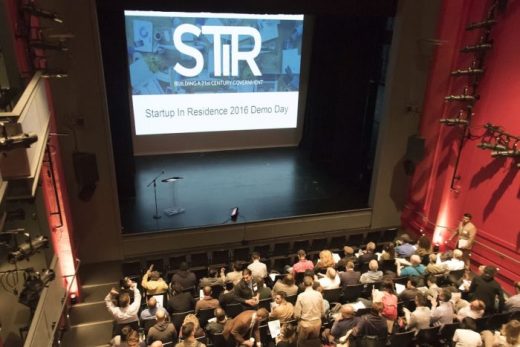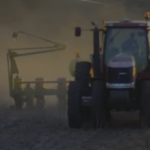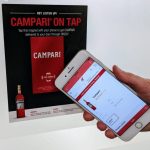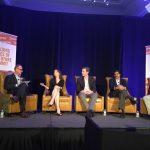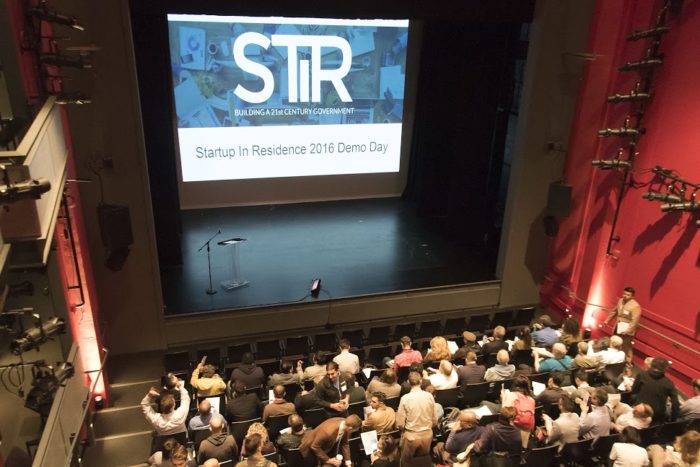San Francisco proves that city-startup collaboration can work
San Francisco proves that city-startup collaboration can work

It’s tough for startups – with shorter capital runways and track records – to work with the long sales cycles, aging systems and bureaucratic requirements of cities. And governments often find themselves frustrated, working with legacy systems that need the support of new technology to keep up with the increases in urbanization and use of services.
But these startups have amazing solutions for cities, and in San Francisco, the Mayor’s Office of Civic Innovation implemented their new Startup in Residence (STIR) Program. It aims to mentor startups through the process of working with government and helps simplify paperwork.
Binti, one of their graduate startups, created a mobile-friendly web app for new foster care parents working with San Francisco’s Human Services Agency (HSA).
The Binti/HSA team built a new public website, sfcaresforkids.org, and developed software that makes it easier for potential foster parents to complete their application process online. The HSA said this tool could save city social workers up to 20-40% of their time, so they can do more outreach and less paperwork.
“Recruiting new foster parents in San Francisco remains critical,” said Trent Rhorer, HSA’s executive director. “Through STIR, Binti has streamlined the foster parenting process in only 16 weeks. This has been a transformative experience for our agency.”
Working on such a critical government-delivered need — “It’s always better when kids are placed with a supportive and caring family,” said Rhorer — may seem daunting to some startups, but this is where STIR helps.
“We were nervous to start working with government because we thought that procurement would be slow and bureaucratic,” said Binti co-founder and CEO Felicia Curcuru. “We didn’t know how to navigate government as an outside tech company.”
In addition to the savings of time and money to San Francisco’s HSA, the wider world of dealing with cities has opened up for Binti with this STIR effort. “HSA has recommended us to other counties in California, so we can start scaling our impact and expanding our business,” said Curcuru.
See also: How cities can tap into billions to fund infrastructure development
Following their first STIR Demo Day, ReadWrite sat down with Jay Nath, San Francisco’s Chief Innovation Officer, to learn about what made this program such a success and where its going next.
ReadWrite: Why was the STIR Program initiated originally? To solve what problem?
Jay Nath: It’s a simple idea. Technology has been the biggest driver of productivity and innovation gains in many sectors – with government being a notable exception. The nascent govtech ecosystem lacks one critical element: access to the needs and insights of government. We created the STIR program to bridge these gaps between government and the technology sector. How can we foster a culture of innovation in government and get our city staff to start approaching problems in more modern, nimble ways? We give the startups and City Departments four months to collaborate and develop a product innovation.
This year’s STIR program builds on the success of the San Francisco Mayor’s Office of Civic Innovation (MOCI) 2014 “Entrepreneurship in Residence” pilot initiative. In 2014, the initiative produced six technology product innovations designed to meet local government needs, such as indoor navigation for visually impaired travelers at San Francisco International Airport.
We fundamentally believe this kind of innovation program is not unique to San Francisco. So this year, with the help of a U.S. Department of Commerce grant, we expanded the program regionally to create a replicable and scalable model to build regional networks of City Governments that accelerate the creation of cutting edge government technology innovations.
RW: How is the program funded?
JN: Due to the success of the pilot program in 2014, in 2015, the U.S. Department of Commerce awarded us a three-year grant to scale the Startup in Residence program to Oakland, San Leandro, and West Sacramento.
And the 2016 STIR program would not have been possible without an incredible array of collaborators. This year, we were supported by a number of organizations including Nasdaq Entrepreneurial Center, Civic Makers, ImpactHubSF, Runway Incubator, and Wearable IoT World Labs, as well as thought leaders, mentors and ambassadors.
Our Department of Technology (DT) was also critical to this year’s success. Under the leadership of our Chief Information Officer, Miguel Gamiño, DT supported the educational programming and made sure that the skill-building was shared with our city’s technology staff.
RW: How many companies participated and with what departments and what cities?
JN: In our pilot year, the program produced six technology product innovations in San Francisco, including an indoor navigation system for the blind and visually impaired at SFO Airport. This year, the 2016 STIR cohort includes 14 startups from across North America and 13 government departments in San Francisco, Oakland, San Leandro, and West Sacramento.
Participating startups are working on issues including streamlining the foster care application process, creating a mobile solution to support early education outreach and enrollment, and developing a tool to assess damage in the aftermath of an emergency, including earthquakes.
You can see the full list of the STIR teams on our website. (Note: They’re also listed below, and the Demo Day video is above.)
RW: What solutions coming out the STIR program were a success and why?
JN: One of STIR’s early successes comes from how the program is structured, it serves as an on-ramp for government departments and startups to start working together.
What we’ve heard time and again from startups who want to serve the public sector is that procurement is an uphill battle to working with government. Through STIR, we’ve lowered the barriers to entry for startups and government departments that want to work together. We did this by modeling the application to the STIR program as a streamlined Request for Proposal (RFP) process.
The new process helped us connect startups to government departments faster, since it took startups less than an hour to complete the application and it took government departments only days to draft. We hope that this streamlined procurement process might be a useful tool for other departments and cities to adopt.
RW: What are the next steps? How will these solutions be incorporated?
JN: While the STIR program does not make any commitments to our startups regarding procurement, we do anticipate many of our teams will enter into contracts with their government partners.
STIR has also facilitated a pathway for the Startups to begin connecting with other municipalities that share many of the same civic challenges and a number of the startups are in conversations now about their products and platforms.
You can dig in more to our 2016 pre-program agreements and post-program options.
RW: What solutions failed and why?
JN: We learned from our first year that many departments would like to continue working with their startup partners after the 16 week program. In 2014, we did not have a clear pathway for the partnerships to continue. We were piloting something that had never been done before so we were not sure the demand would be there on both sides. This meant that the startups in our pilot cohort had a difficult time working directly with their department after the end of the program. This is why we took the time to develop the RFP process mentioned above so that the there was more clear procurement pathway.
RW: What’s the plan for next year’s STIR program? When is it and where can people apply?
JN: The next round of STIR will kick off in Spring 2017, but applications for the program will open up before the end of 2016. Startups will be able to submit their application to STIR at www.startupinresidence.org. We strongly encourage startups that are interested in applying to submit an initial application here, and city agencies that are interested in joining can learn more
Our goal is to continue growing the STIR network to more cities regionally and beyond. We believe that cities working together is a tremendous benefit to government in shared learnings and for startups by creating a broader market opportunity.
If you are interested in becoming a partner, mentor, or have any other questions, please contact STIR program manager Jeremy Goldberg at jeremy.goldberg@sfgov.org.
RW: How will the program grow?
JN: The goal of STIR is to build a large network of cities across the globe. This network of cities is an opportunity to not only capture the energy around the STIR program, but also a place to share learnings, and success stories alongside the co-developed products and platforms. We’ve witnessed similar programs taking place in Pittsburgh, Kansas City, Amsterdam, The Hague, and many more. It’s exciting to see the STIR model already catching on in many other cities because every city brings a unique angle into building the government technology ecosystem.
RW: What did you learn that you would now change?
JN: With each cohort and iteration of the program, we are learning and adapting. How do we scale and distribute our educational training program so that all the cities can equally benefit from the amazing speakers we pulled together? How can we increase the networking and learning opportunities between the government staff in each of the participating cities? How can we continue to support our government staff who are taking important risks to solving our city’s critical challenges? We welcome feedback and dialogue on how we can make STIR a program that helps government modernize and improve quality of life for our residents.
RW: What is your advice to other cities trying to work with startups?
JN: We’re writing a STIR Playbook – stay tuned!
Here are the 2016 STIR teams
Take a look at the teams making up the cohort for this STIR class:
LENS worked with the San Francisco Fire Department Neighborhood Emergency Response Team to design an emergency platform that manages profiles and information on community volunteers.
KarFarm worked with the San Francisco Office of Contracts to improve city vehicle procurement with a digital solution that generates RFPs.
SpiralScout assisted San Francisco Public Works to create a mobile app and database for officials to collect damage assessment data after major disasters such as earthquakes.
Spotery worked with the San Francisco Recreation Department to create a mobile app that allows users to reserve recreation facilities and participate in online lotteries for youth athletic programs.
CommunityLogiq worked with the San Francisco Office of Economic and Workforce Development to design software that allows office staff to visualize, map and track changes to land parcels in industrial zones.
Binti created a mobile-friendly web app for potential foster care parents working with San Francisco’s Human Services Agency. The app guides citizens through the foster care certification process and is hoped to be a pipeline for prospective candidates. For agency staff, the app doubles as a management tool to handle education and communication tasks.
BAYES IMPACT worked with the Oakland Police Department to create an analytics solution to assess highly demanded information and services from the police department.
Preschool2Me assisted Oakland Human Services Department to create software to support Head Start outreach, enrollment, and administration.
LotaData is provided an analytics app and user ID card that lets San Leandro’s Recreation and Human Services Department staff visualize and track usage patterns for recreational facilities. Leadership officials plan to use the analysis to optimize and improve services.
SyncFab worked with the San Leandro Office of Workforce and Economic Development to create a regional procurement platform that highlights San Leandro’s factory and supply chain resources.
Decision Patterns worked with the San Leandro IT Department to engineer an app that analyzes city budget and performance data.
RAXAR worked with the West Sacramento Fire Department to build a platform that allows fire department responders to report on emergencies and incidents from the field.
MOSAIQQ worked with the West Sacramento Police Department to craft a digital solution for police to manage, analyze, record and report on cases in real time and in the field.
AppleDore assisted the West Sacramento Police Department to create a mobile app that assists officers in screening homeless citizens, and would then pair them with available social service resources.
Note: Wearable IoT World Labs is an affiliate of ReadWrite.
The post San Francisco proves that city-startup collaboration can work appeared first on ReadWrite.
(33)

